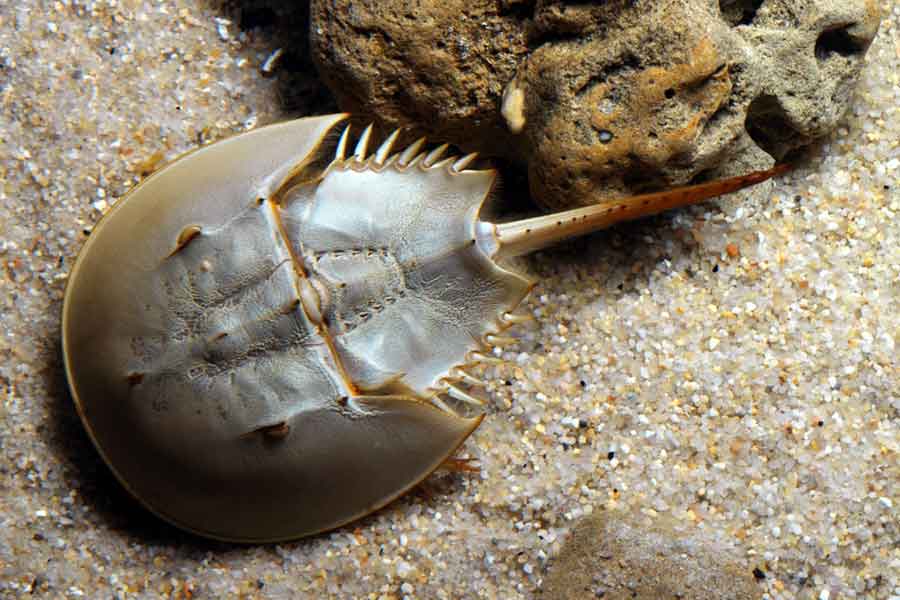
Every spring, the east coast of the United States is invaded by the sole survivors of an animal group whose existence dates back 500 million years. These are the bayonet crabs. They are not closely related to true crabs, but rather distantly related to spiders and scorpions.
Viewed from above, the body of these animals appears armored. Underneath the «shield,» they have four pairs of locomotive legs and two pairs of additional appendages related to the mouth. In males, one pair of these appendages is stronger and is used to latch onto females during spawning. The name «bayonet» comes from a type of blade-like structure on their tail, which is narrow and pointed. Native Americans called them «sikanauk» and hunted them for their meat, using the sharp tail as the tip of harpoons used for fishing.
The breeding behavior of bayonet crabs is as surprising as their appearance. In fact, their spawning takes place on the beach. During the nights coinciding with the equinoctial tides in May and June, bayonet crabs swim in large numbers towards the coast. The males have already latched onto the larger females and have been hanging onto them for several days. It is even common to see a female towing two or three males. Upon reaching the beach, at the edge of the waves, the females dig a kind of nest where they lay hundreds of eggs. The males then release sperm. As the water recedes, covering the eggs with sand, the parents return to the sea, where they separate.
Two weeks later, the greenish eggs reach a size several times larger than their original size. Those that have not been devoured by predators are ready to hatch. During the next equinoctial tide, the eggs are uncovered, and the released hatchlings make their way towards deeper waters. They will be responsible for repeating the cycle the following year and every year thereafter, since the beginning of time.
«You cannot defend what you do not love, and you cannot love what you do not know.»

